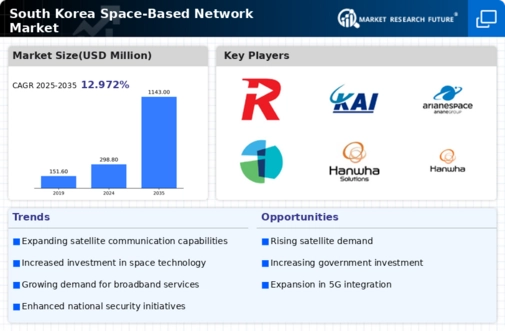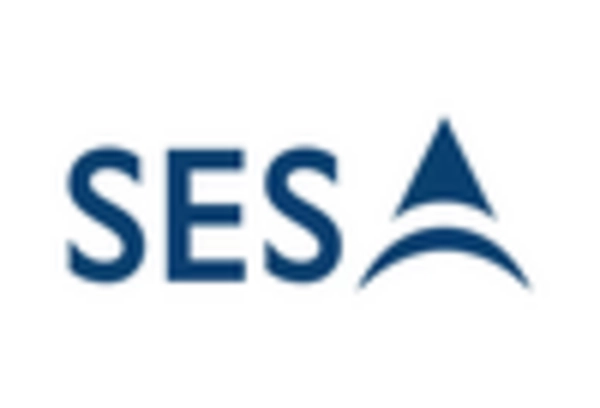Rising Demand for Connectivity
The space based-network market in South Korea experiences a notable surge in demand for enhanced connectivity solutions. As urbanization accelerates, the need for reliable internet access in remote and rural areas becomes increasingly critical. The government has recognized this necessity, leading to initiatives aimed at expanding broadband coverage through satellite technology. Reports indicate that the market could grow at a CAGR of approximately 15% over the next five years, driven by the increasing reliance on digital services across various sectors. This rising demand for connectivity is likely to propel investments in satellite infrastructure, thereby fostering growth within the space based-network market.
Growing Interest in Space Exploration
The burgeoning interest in space exploration is significantly influencing the space based-network market in South Korea. As the nation aims to enhance its presence in the global space arena, investments in satellite technology and infrastructure are on the rise. This interest is not only limited to governmental initiatives but also includes private sector involvement, with several companies exploring opportunities in satellite manufacturing and launch services. The potential for commercial applications, such as Earth observation and data analytics, is driving innovation within the market. Analysts suggest that this trend could result in a market expansion of approximately 18% by 2028.
Regulatory Support and Policy Frameworks
The regulatory environment in South Korea is evolving to support the growth of the space based-network market. The government is implementing policies that encourage investment in satellite communications and streamline the licensing process for new technologies. This supportive framework is essential for fostering innovation and attracting foreign investment. Additionally, the establishment of clear guidelines for satellite operations enhances operational efficiency and safety. As a result, the space based-network market is likely to benefit from increased investor confidence, which could lead to a market growth rate of around 12% annually over the next five years.
Strategic Partnerships and Collaborations
Strategic partnerships between private companies and government entities are emerging as a key driver in the space based-network market. Collaborations with international space agencies and technology firms facilitate knowledge transfer and resource sharing, enhancing the overall capabilities of South Korea's satellite network. These alliances are instrumental in accelerating the deployment of innovative solutions and expanding service offerings. For instance, partnerships focused on developing satellite constellations can significantly improve coverage and service reliability. The impact of these collaborations is expected to be profound, potentially increasing market penetration by 20% within the next few years.
Technological Advancements in Satellite Systems
Technological innovations play a pivotal role in shaping the space based-network market in South Korea. The development of advanced satellite systems, including low Earth orbit (LEO) satellites, enhances data transmission speeds and reduces latency. These advancements are crucial for applications such as IoT, telemedicine, and smart city initiatives. The South Korean government has allocated substantial funding for research and development in satellite technologies, which is expected to yield significant improvements in network capabilities. As a result, the space based-network market is poised for expansion, with projections indicating a potential market value increase of over $1 billion by 2027.

















Leave a Comment